You don’t need to spend hundreds of dollars on smart home integration to protect your property from water damage. Budget leak detection systems under $30 can effectively monitor your most vulnerable areas and alert you before minor drips become major disasters. The question isn’t whether these affordable devices work—it’s knowing which specific models actually deliver reliable performance when water threatens your floors, walls, and belongings.
Why Budget Leak Detection Systems Matter for Homeowners
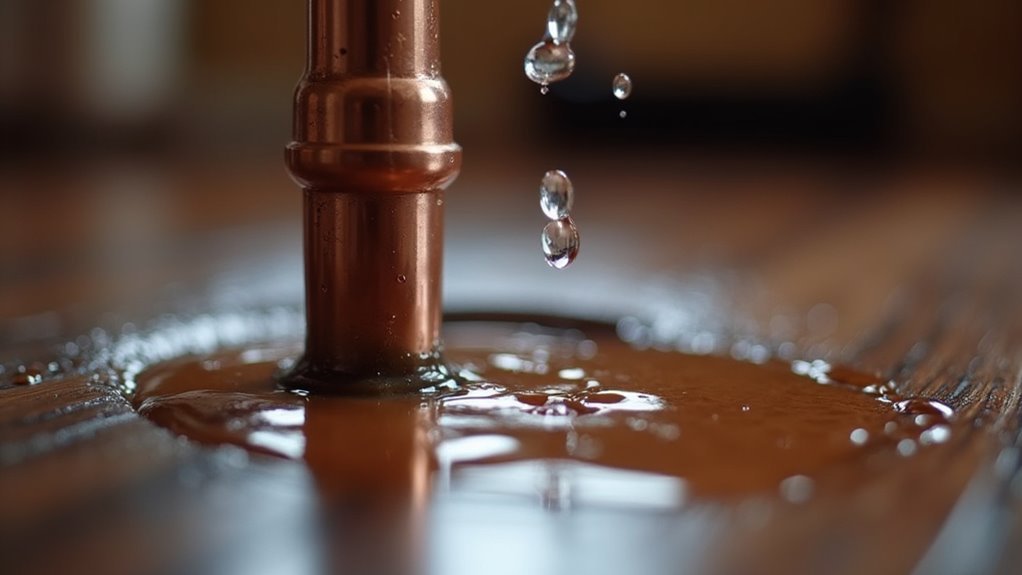
Water damage strikes without warning, and the financial devastation can be overwhelming—with average repair costs reaching $15,000 per incident.
You’re facing a threat that accounts for nearly 25% of homeowners insurance losses, making protection essential rather than optional.
Water damage represents one of the most significant financial risks homeowners face, accounting for a quarter of all insurance claims annually.
Budget leak detection systems offer you an affordable solution to prevent water damage before it destroys your home and finances. A smart water leak detector starting at just $18 can save you thousands by catching leaks early.
These systems provide loud alarms and mobile notifications, ensuring you’re alerted immediately even when away from home.
You’ll avoid costly mold remediation, structural repairs, and insurance claims by investing in these budget-friendly monitors that deliver reliable protection without straining your budget.
How Water Leak Detectors Actually Work
Understanding the technology behind these devices demystifies their effectiveness and helps you choose the right system for your home.
Your water leak detector operates through a simple yet reliable circuit system. When water appears between two contact points, it completes the electrical circuit and triggers an immediate alert. The conductive sensors act as the device’s eyes, constantly monitoring for moisture that bridges the gap between contacts.
Budget models typically feature basic alarm systems with loud audible alerts, while advanced versions can detect leaks and send notifications directly to your smartphone.
Some smart home-compatible detectors monitor temperature and humidity levels, warning you about freezing conditions. Battery-operated units offer placement flexibility, ensuring you can position them strategically throughout your home’s most vulnerable areas.
Key Features to Look for in Affordable Systems
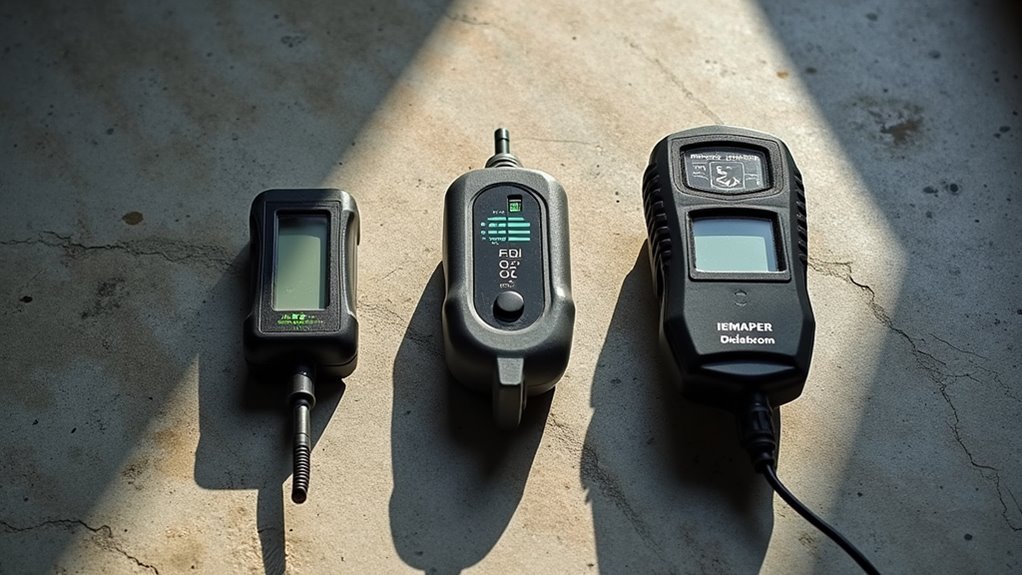
When shopping for budget-friendly water leak detectors, you’ll want to focus on three vital features that directly impact performance and reliability.
Detection speed determines how quickly you’re alerted to potential water damage, while alert system options guarantee you’ll actually hear or receive notifications when problems arise.
Battery life duration affects long-term costs and maintenance requirements, making it essential for budget-conscious buyers who want reliable protection without frequent replacements.
Detection Speed Response
Since every second counts when water begins flowing where it shouldn’t, you’ll want a budget leak detection system that responds immediately to moisture presence. The best affordable detectors achieve detection speed of approximately two seconds, like the YoLink Water Leak Sensor. This rapid response prevents extensive water damage that can occur within minutes.
| Feature | Response Time | Benefit |
|---|---|---|
| Basic Sensors | 2-5 seconds | Prevents major damage |
| Smart Capabilities | Instant notifications | Remote monitoring |
| Built-in Alarms | Immediate 105dB alerts | On-site awareness |
Look for systems with smart capabilities that instantly send smartphone notifications, ensuring they alert you to potential problems even when you’re away. Built-in alarms reaching 105 decibels provide immediate on-site warnings. Advanced models use dual probes and humidity sensors for thorough leak detection coverage.
Alert System Options
Fast detection means nothing without effective alerts that reach you when leaks occur. When evaluating alert system options, prioritize water leak detector models with built-in alarms producing at least 100 decibels – loud enough to wake you during nighttime emergencies.
Multi-alert systems offering push notifications, emails, and text messages guarantee you’ll receive warnings even when away from home.
Choose detectors compatible with smart home platforms like Alexa, Google Assistant, or HomeKit for seamless integration and smartphone app control. Battery-operated sensors provide placement flexibility without requiring electrical outlets.
Don’t overlook low battery notification features – they’ll alert you when replacement’s needed, preventing monitoring gaps. These extensive alert capabilities transform basic leak detectors into reliable home protection systems that keep you informed regardless of your location.
Battery Life Duration
Two years of continuous monitoring from a single set of batteries makes budget leak detection systems surprisingly cost-effective investments.
You’ll find that most affordable models, including the SwitchBot Wi-Fi Leak Detector, deliver reliable battery life spanning 24 months with standard AAA batteries. The Kidde Water Leak + Freeze Detector offers similar longevity while maintaining fast response times throughout its operational period.
Battery-powered units give you installation flexibility since you won’t need proximity to power outlets. You can position your water leak detector anywhere potential leaks might occur.
However, you should prioritize models featuring low battery alerts to prevent monitoring gaps. These notifications guarantee you’ll replace batteries before they’re completely drained, maintaining uninterrupted protection at an affordable price point without ongoing maintenance headaches.
Top Budget-Friendly Standalone Water Sensors

When you’re looking for effective leak detection without breaking the bank, standalone water sensors offer excellent value and reliable protection for your home.
These budget-friendly options don’t require expensive hubs or monthly subscriptions while delivering reliable water detection capabilities.
The best water leak detector choices include several standout models:
- Kidde Water Leak + Freeze Detector ($28) – Features fire alarm-level loudness with fast performance, making it an exceptional budget-friendly option.
- SwitchBot Wi-Fi Leak Detector ($18) – Offers smart leak detectors functionality with customizable alerts, two-year battery life, and no hub requirements.
- Govee Water Leak Detector 5-Pack ($50) – Provides extensive coverage with five sensors delivering 100-decibel alarms for maximum protection.
These standalone sensors prove you don’t need premium pricing for effective water detection and peace of mind.
DIY Installation Vs Professional Setup Costs
How much should you expect to spend on installation when choosing between DIY and professional leak detection systems? The cost difference is substantial. Professional installations range from $350 to $700, often requiring expensive plumbing modifications and water line splicing. If you need a new shutoff valve, you’ll face an additional $375 to $600 expense.
| Installation Type | Cost Range | Additional Expenses |
|---|---|---|
| DIY Models | $18-$700 | None |
| Professional Installations | $350-$700 | $375-$600 valve replacement |
| Total Professional Cost | $725-$1,300 | Including valve work |
DIY models like Guardian by Elexa use wireless, battery-powered sensors that simply attach to existing valves without plumbing work. Budget-conscious homeowners can protect their homes with leak detection systems starting at just $18, making DIY installation the clear winner for affordability.
Guardian by Elexa System Review
You’ll find the Guardian by Elexa system stands out for its clamp-on design that eliminates complex plumbing modifications during installation.
The setup process is straightforward since you’re simply attaching the device to existing water valves and placing wireless sensors in leak-prone areas.
This system delivers very good leak detection performance while also monitoring temperature conditions that could lead to frozen pipes.
System Setup Process
Since the Guardian by Elexa system clamps directly onto your existing water valve, you won’t need to hire a plumber or tackle complex installation procedures.
The system setup process takes minimal effort and technical knowledge.
You’ll position wireless sensors around vulnerable areas like water heaters, washing machines, and sinks. The temperature detection feature automatically activates once sensors are in place.
Here’s what you’ll handle during installation:
- Download the companion app and connect the main unit to your home’s Wi-Fi network
- Mount additional wireless sensors in leak-prone locations throughout your property
- Configure alert preferences and test the manual shutoff button functionality
The customizable coverage means you can start with basic protection and add $70 sensors as needed, scaling your leak detection based on your property’s specific requirements.
Performance and Reliability
When it comes to detecting water leaks, the Guardian by Elexa system earns a “Very Good” rating for its core performance capabilities. You’ll find its wireless sensors effectively identify both floor and drip leaks through strategically placed probes, delivering the reliable leak detection you need for home protection.
The system’s performance extends beyond basic water detection. You’ll receive temperature monitoring alerts that warn of potential freeze conditions, adding an extra layer of reliability to prevent costly damage.
Each additional sensor costs $70, letting you expand coverage throughout your home for thorough monitoring.
You’ll appreciate the manual valve operation button, which gives you immediate control over water flow when the sensors detect a leak, ensuring quick response times.
YoLink Water Leak Sensor Performance Analysis
Performance testing reveals that the YoLink Water Leak Sensor delivers exceptional responsiveness, detecting water contact within just two seconds to provide immediate leak alerts.
You’ll appreciate how YoLink’s sensors maintain reliability even during heavy water exposure, thanks to their IP66 waterproof rating that guarantees consistent operation in high-risk environments.
The sensor’s thorough detection capabilities include:
- Dual-probe design with top and bottom sensors that detect water from multiple angles and positions
- 105-decibel alarm that’s audible from over 30 feet away, assuring you won’t miss critical alerts
- Smart home automation integration through Amazon Alexa and IFTTT compatibility via the required hub
While the dedicated hub increases your initial investment, it enables advanced leak detection features and seamless integration with your existing smart home ecosystem, making it worthwhile for extensive water monitoring.
Kidde Water Leak + Freeze Detector Breakdown
Moving from premium sensors to more accessible options, the Kidde Water Leak + Freeze Detector proves that effective leak protection doesn’t require a significant investment. At just $28, you’ll get immediate setup without complex installations or additional hardware.
The device delivers a loud alarm reaching 96 decibels—matching traditional fire alarms—so you won’t miss critical alerts. Its Amazon Alexa compatibility seamlessly integrates into smart home systems, enabling voice-activated notifications.
| Feature | Specification | Value |
|---|---|---|
| Price | Cost | $28 |
| Alarm Volume | Decibels | 96 dB |
| Setup Time | Installation | Seconds |
| Battery Duration | Lifespan | 2 Years |
| Smart Integration | Compatibility | Alexa |
The two-year battery life eliminates frequent maintenance concerns, making this detector a practical choice for budget-conscious homeowners seeking reliable water and freeze monitoring.
Smart Home Integration on a Budget
Budget-friendly leak detectors have revolutionized smart home integration accessibility by eliminating expensive hub requirements that once made automation costly.
You can now connect devices like the YoLink Water Leak Sensor 4 directly to Amazon Alexa and receive instant notifications within two seconds of detection.
Modern Wi-Fi water leak systems offer seamless connectivity without breaking your budget:
- Direct voice assistant compatibility – Connect to Amazon Alexa and Google Home without additional hubs
- IFTTT integration capabilities – Automate responses and create custom smart home workflows
- Real-time app-based alerts – Receive immediate notifications on your smartphone wherever you are
The SwitchBot Wi-Fi water leak detector exemplifies this trend at just $18, providing customizable alerts and hub-free operation that makes smart home automation accessible to budget-conscious homeowners.
Battery Life and Power Options Comparison
When choosing a budget leak detector, you’ll need to decide between battery-powered models and those requiring outlet power, as each option affects your installation flexibility and ongoing costs.
Battery-operated systems like the Kidde Water Leak + Freeze Detector offer up to two years of operation on AAA batteries, but you’ll face replacement expenses over time.
You’ll want to prioritize detectors with low battery alerts, such as the Govee Water Leak Detector, which guarantees you’re warned before the system stops protecting your home.
Battery Vs Outlet Power
Since power source directly impacts where you can install your leak detector, understanding the trade-offs between battery and outlet-powered models becomes essential for making the right choice.
Battery-powered leak detectors offer flexible placement options, allowing you to position them anywhere without worrying about nearby outlets. They’ll typically last 1-2 years and include app notifications for low battery warnings.
Outlet-powered models require proximity to electrical sources but provide continuous operation without battery concerns.
Here’s what you should consider:
- Battery models give you complete installation freedom but need periodic replacement
- Outlet units deliver consistent performance but limit placement near power sources
- Both options provide comparable alarm volumes for effective leak detection
Choose based on whether you prioritize placement flexibility or uninterrupted operation.
Replacement and Maintenance Costs
Beyond the initial power source decision, you’ll need to budget for ongoing replacement and maintenance costs that can add up over time.
Battery-operated detectors require replacement batteries every one to two years, costing $5 to $15 per unit. While this seems minimal initially, multiple detectors throughout your home can make these maintenance costs accumulate considerably.
Fortunately, many budget models offer plug-and-play design with easy battery replacement, reducing service expenses. The extended battery life of quality systems helps minimize frequency of replacements.
Regular maintenance beyond battery changes includes periodic alarm testing to guarantee reliable performance. Though these ongoing costs exist, they’re relatively modest compared to potential water damage from undetected leaks, making consistent maintenance a worthwhile investment.
Low Battery Alert Features
Battery reliability stands as a critical factor when selecting budget leak detection systems, making low battery alert features essential for preventing unexpected device failures.
Smart water-leak detectors like the YoLink Water Leak Sensor 4 and Kidde Water Leak + Freeze Detector are battery-operated, offering flexible placement options without requiring nearby outlets.
Most quality detectors provide multiple notification methods when power runs low:
- App notifications – Real-time alerts sent directly to your smartphone
- Audible alarms – Local beeping sounds when battery levels drop critically
- LED indicators – Visual warning lights showing battery status
Battery longevity varies considerably between models. The Kidde detector delivers up to two years of operation, while others need more frequent replacements.
Choose models with easily replaceable batteries to avoid complicated maintenance procedures requiring special tools.
Placement Strategies for Maximum Coverage
When you’re installing leak detection systems on a tight budget, strategic placement becomes essential for maximizing your investment’s effectiveness. Focus your leak detectors near high-risk areas like sinks, toilets, water heaters, and washing machines where problems typically start.
Don’t overlook basements and crawl spaces—these spots accumulate moisture and hide plumbing issues until they’re costly.
For ideal coverage, position detectors under cabinets and near appliances like dishwashers and refrigerators. You’ll catch leaks before they spread throughout your home.
Battery-operated models offer flexible placement options, letting you monitor hard-to-reach areas without worrying about electrical outlets.
Consider using multiple detectors in larger rooms and extension nodes to cover all potential leak points effectively within your budget constraints.
Alert Systems and Notification Methods
Although placement matters considerably, your leak detection system’s alert capabilities determine whether you’ll respond quickly enough to prevent major damage. Budget models offer surprisingly robust notification methods that keep you informed instantly.
Swift alert capabilities in your leak detection system make the difference between minor cleanup and catastrophic water damage throughout your home.
Most affordable leak detectors incorporate multiple alert systems to guarantee you don’t miss critical warnings:
- Audible alarms reaching 100 decibels that immediately alert anyone nearby
- Push notifications through smartphone apps for instant awareness when you’re away
- Visual indicators like flashing lights providing additional notification layers
Battery-operated models offer placement flexibility while maintaining reliable notifications. Many budget options now include Wi-Fi connectivity, enabling email or SMS alerts for remote monitoring.
These systems also provide low battery alerts, guaranteeing your protection remains active. With smartphone apps becoming standard, you’ll receive notifications regardless of your location.
Common Problems With Cheap Detectors
When you opt for cheap leak detectors, you’ll likely encounter frustrating false alarms that trigger without any actual water present.
You’ll also notice delayed alert responses that can mean the difference between catching a small drip and dealing with major flood damage.
Additionally, you’ll find yourself constantly replacing batteries since budget models typically can’t maintain power for extended periods.
False Alarm Issues
Budget leak detectors frequently trigger false alarms that’ll leave you scrambling to investigate non-existent problems. These inaccurate readings stem from basic sensors that can’t distinguish between actual leaks and everyday moisture sources.
You’ll encounter false alarms from several common triggers:
- Environmental changes – Humidity fluctuations and temperature shifts confuse cheap sensors
- Normal moisture – Condensation from pipes or minor water splashes register as leaks
- Lack of filtering technology – Budget detectors miss advanced features that prevent false positives
This constant stream of false alerts creates alarm fatigue, where you’ll start ignoring notifications altogether.
When budget detectors cry wolf repeatedly, user trust erodes quickly. You’ll either disable the system or become desensitized to alerts, potentially missing real leaks when they occur.
Delayed Alert Response
Beyond false alarms, cheap detectors create another critical vulnerability: delayed response times that can cost you thousands in water damage. Budget systems often take several minutes to send alerts, while water spreads rapidly through your home.
| Issue | Impact |
|---|---|
| Slow sensor response | Minutes of undetected flooding |
| Poor connectivity | Failed smartphone notifications |
| Low-quality sensors | Missed small leaks until pooling |
| Battery dependency | No alerts when power’s dead |
Low-cost models struggle with reliable connectivity, meaning you won’t receive immediate smartphone alerts during Wi-Fi instability. Their inferior sensors require significant water accumulation before triggering, missing early detection opportunities. When batteries die in these cheap detectors, you’re completely unprotected. These delayed alerts transform minor leaks into major disasters.
Poor Battery Life
While premium leak detectors can run for years on a single set of batteries, cheap models drain power so quickly you’ll find yourself replacing batteries every few months. This poor battery life creates a cascade of problems that can leave you vulnerable when you need protection most.
Budget detectors with subpar battery life present several critical issues:
- Unexpected failures – Devices can die without warning, leaving you unprotected during potential water emergencies.
- Missing notifications – Many cheap models don’t alert you when battery levels drop, so you won’t know when functionality is compromised.
- Increased maintenance costs – Constant battery replacements quickly add up, often exceeding the detector’s initial purchase price.
When your detector fails due to dead batteries, you’re fundamentally unprotected against water damage until you discover and fix the problem.
Cost-Benefit Analysis of Budget Systems
Three key factors make budget leak detection systems an incredibly smart investment for most homeowners.
First, you’re looking at minimal upfront costs ranging from $18 to $50, making these systems accessible regardless of your financial situation.
Second, the potential savings are enormous—while you’ll spend under $50 on a quality budget system, water damage claims typically cost between $10,000 to $15,000 to repair.
Your cost-benefit analysis becomes crystal clear when you consider that preventing just one major leak pays for your entire system hundreds of times over.
Budget leak detection systems like the Kidde detector at $28 or Govee’s multi-sensor pack at $50 deliver reliable protection without premium pricing, proving effective water damage prevention doesn’t require expensive equipment.
Frequently Asked Questions
Do Water Leak Detectors Really Work?
Yes, water leak detectors really work. You’ll get alerts within seconds when water’s detected, preventing major damage. They’re reliable, easy to install, and smart models notify your phone even when you’re away.
Are Leak Detection Companies Worth It?
You’ll find leak detection companies worthwhile if you’re protecting a valuable home. They offer professional-grade systems with automatic shutoffs that prevent extensive damage, potentially saving you thousands in water damage repairs.
What Is the Best Water Leak Sensor Consumer Report?
You’ll find Consumer Reports highlights Guardian by Elexa as their top DIY leak detection system. It clamps onto existing water valves and uses wireless sensors for effective leak detection throughout your home.
Is Leak Detection Accurate?
Leak detection accuracy varies by technology you choose. Smart detectors offer reliable alerts within seconds, while budget circuit-based models effectively detect water presence but may miss slow leaks or humidity changes.

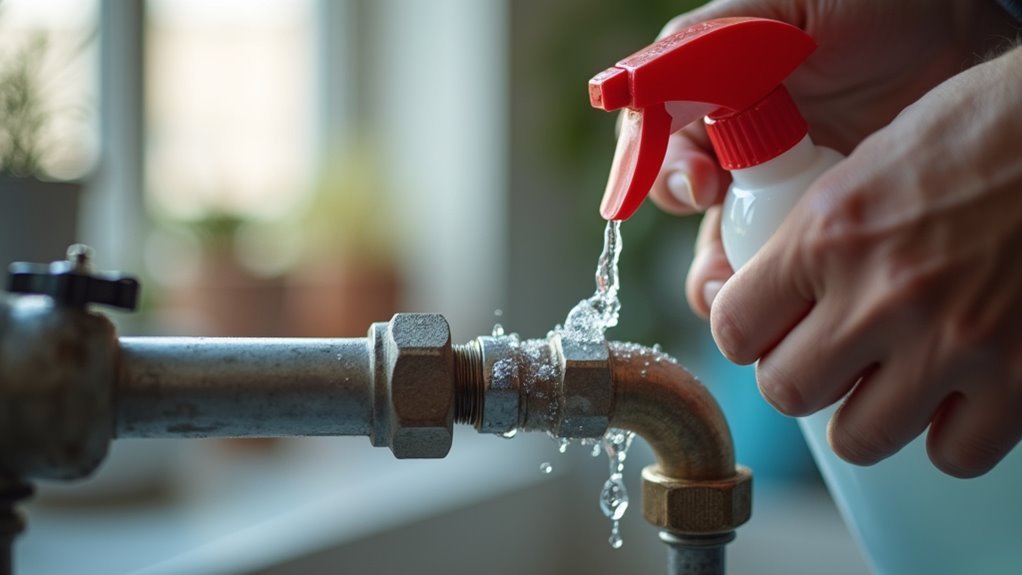

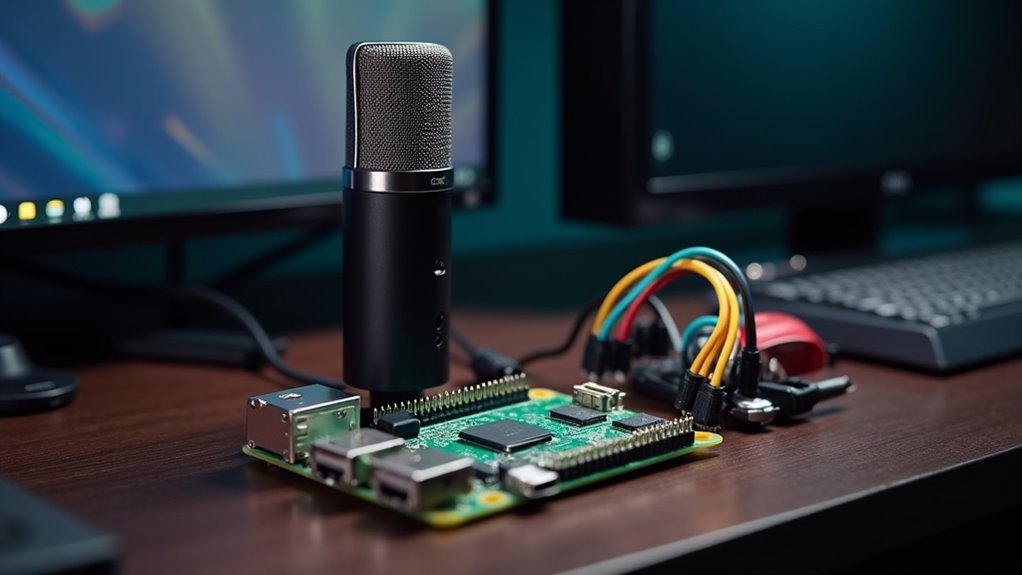
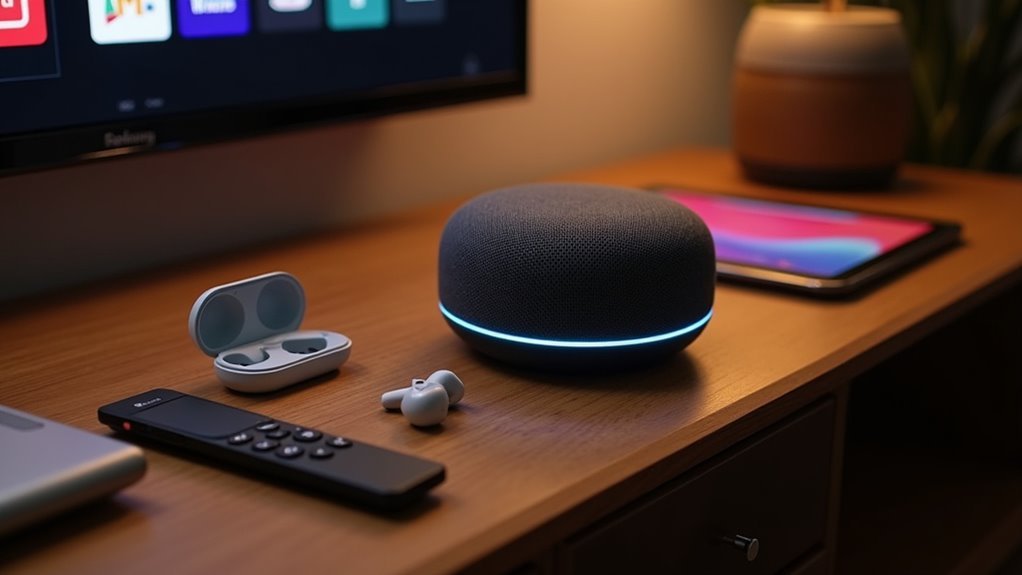
Leave a Reply